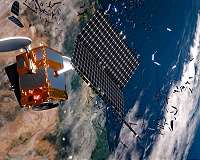Lisää infoa Intian testistä ja siitä ohjuksesta.
https://www.armyrecognition.com/wea...e_weapon_mission_codenamed_project_xsv-1.htmlIndia’s anti-satellite (A-SAT) mission was a top secret one, kept under wraps for nearly 31 months, Indian Defence News reports. Only a handful of scientists knew about it, which was codenamed ‘Project XSV-1.’ For the rest of the team, it was another BMD (Ballistic Missile Defence) campaign, with some upgrades. None knew that a space strike or a ‘kinetic kill’ was in the offing.
The Defence Research and Development Organisation (DRDO) officials were told to maintain top secrecy about the project soon after Prime Minister Narendra Modi gave the go-ahead sometime in 2016. Propelled by PM’s go-ahead for the ‘kill’, the DRDO carefully scripted the flight path for one of the top-priority and secret military missions of the millennium. DRDO was told in no uncertain terms that at no point any details about A-SAT missions will be shared on public domain or spoken about. Missile scientists making presentations at various seminars were told to be ‘sure’ about the content that was going out on the public domain, Indian Defense News reports. None knew that A-SAT was in the making, barring a few. There were only six core members who knew what ‘Project XSV-1’ was all about. (The ‘SV’ apparently meant Shakti Vehicle and ‘1’ stood for the first mission.)
After the NDA government came to power in 2014, the DRDO top brass was warned officially many times not to divulge ‘too many details’ pertaining to sensitive strategic missions. Frequent directions went from the PMO (Prime Minister’s Office) and NSA’s office to stay low-key on national missions. The government wanted all ministries, including MoD (Ministry of Defence), to follow strict guidelines when it came to information decimation. Internally, the DRDO is said to have completely camouflaged the mission and almost everyone believed that it was an exo-atmospheric interceptor missile, part of the larger BMD program.
The last six months (end of September, 2018, to March, 2019) were crucial for the A-SAT mission. The DRDO teams were growing in confidence and all proven technologies were carefully scrutinised and fault lines drawn. The missile weighed around 18 tonnes with a height of around 13 metres. It pulverised the Microsat-R, weighing one tonne, within almost three minutes (168 seconds) after the launch.
Viimeksi muokattu:



 , haluan sanoa että ihmisillä on uskomattoman hyvä kyky oppia asioita pelkästään näkemällä ja kokeilemalla. Ja tarvittava tekniikka kehitetään nopeasti kun tiedetään että se on mahdollista.
, haluan sanoa että ihmisillä on uskomattoman hyvä kyky oppia asioita pelkästään näkemällä ja kokeilemalla. Ja tarvittava tekniikka kehitetään nopeasti kun tiedetään että se on mahdollista.